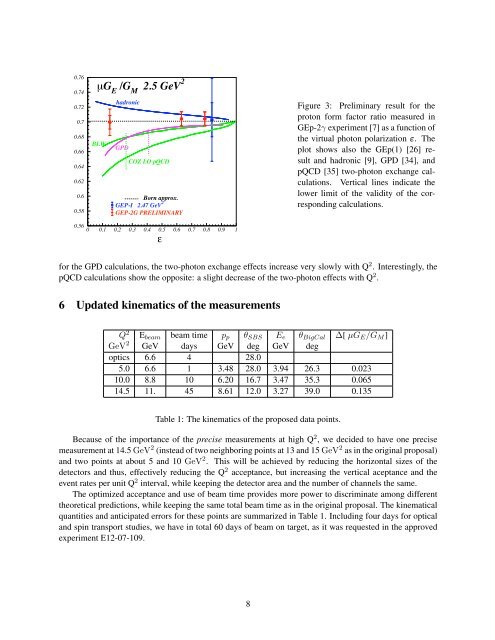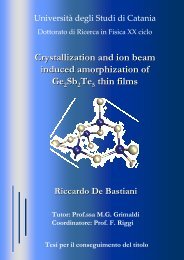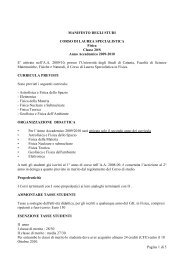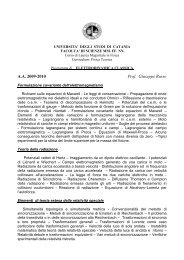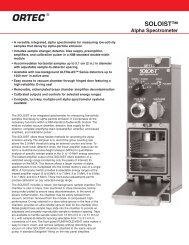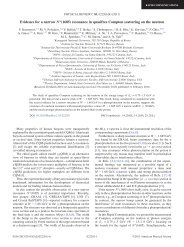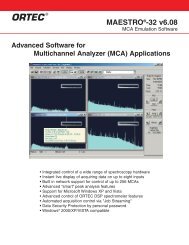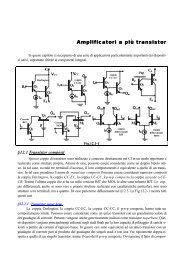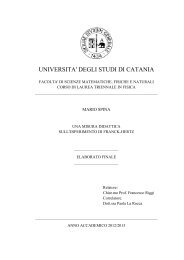Update on E12-07-109: Large Acceptance Proton Form Factor ... - Infn
Update on E12-07-109: Large Acceptance Proton Form Factor ... - Infn
Update on E12-07-109: Large Acceptance Proton Form Factor ... - Infn
Create successful ePaper yourself
Turn your PDF publications into a flip-book with our unique Google optimized e-Paper software.
0.76<br />
0.74<br />
0.72<br />
0.7<br />
0.68<br />
0.66<br />
0.64<br />
0.62<br />
0.6<br />
0.58<br />
!G E /G M 2.5 GeV 2<br />
BLW<br />
hadr<strong>on</strong>ic<br />
GPD<br />
COZ LO pQCD<br />
Born approx.<br />
GEP-I 2.47 GeV 2<br />
GEP-2G PRELIMINARY<br />
0.56<br />
0 0.1 0.2 0.3 0.4 0.5 0.6 0.7 0.8 0.9 1<br />
!<br />
Figure 3: Preliminary result for the<br />
prot<strong>on</strong> form factor ratio measured in<br />
GEp-2γ experiment [7] as a functi<strong>on</strong> of<br />
the virtual phot<strong>on</strong> polarizati<strong>on</strong> ε. The<br />
plot shows also the GEp(1) [26] result<br />
and hadr<strong>on</strong>ic [9], GPD [34], and<br />
pQCD [35] two-phot<strong>on</strong> exchange calculati<strong>on</strong>s.<br />
Vertical lines indicate the<br />
lower limit of the validity of the corresp<strong>on</strong>ding<br />
calculati<strong>on</strong>s.<br />
for the GPD calculati<strong>on</strong>s, the two-phot<strong>on</strong> exchange effects increase very slowly with Q 2 . Interestingly, the<br />
pQCD calculati<strong>on</strong>s show the opposite: a slight decrease of the two-phot<strong>on</strong> effects with Q 2 .<br />
6 <str<strong>on</strong>g>Update</str<strong>on</strong>g>d kinematics of the measurements<br />
Q 2 Ebeam beam time pp θSBS Ee θBigCal ∆[ µGE/GM]<br />
GeV 2 GeV days GeV deg GeV deg<br />
optics 6.6 4 28.0<br />
5.0 6.6 1 3.48 28.0 3.94 26.3 0.023<br />
10.0 8.8 10 6.20 16.7 3.47 35.3 0.065<br />
14.5 11. 45 8.61 12.0 3.27 39.0 0.135<br />
Table 1: The kinematics of the proposed data points.<br />
Because of the importance of the precise measurements at high Q 2 , we decided to have <strong>on</strong>e precise<br />
measurement at 14.5 GeV 2 (instead of two neighboring points at 13 and 15 GeV 2 as in the original proposal)<br />
and two points at about 5 and 10 GeV 2 . This will be achieved by reducing the horiz<strong>on</strong>tal sizes of the<br />
detectors and thus, effectively reducing the Q 2 acceptance, but increasing the vertical aceptance and the<br />
event rates per unit Q 2 interval, while keeping the detector area and the number of channels the same.<br />
The optimized acceptance and use of beam time provides more power to discriminate am<strong>on</strong>g different<br />
theoretical predicti<strong>on</strong>s, while keeping the same total beam time as in the original proposal. The kinematical<br />
quantities and anticipated errors for these points are summarized in Table 1. Including four days for optical<br />
and spin transport studies, we have in total 60 days of beam <strong>on</strong> target, as it was requested in the approved<br />
experiment <strong>E12</strong>-<strong>07</strong>-<strong>109</strong>.<br />
8


